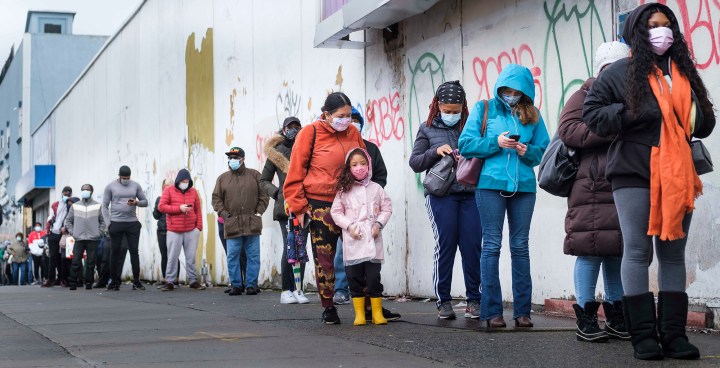2020 US PRESIDENTIAL ELECTIONS
How to navigate the long and complicated US vote count

Finally, the US presidential election is about to be upon us. Like most things, preparation for dealing with such an event is crucial. But additionally, figuring what to watch for in all the noise is just as important. The clock is ticking.
If you read this article on Monday, there will only be one day to go before the campaign for the presidency in the US (plus hundreds and hundreds of other elected positions all across the country) will finally, finally be over. Finally. Much of that energy, time, money, campaign advertisements blanketing the broadcast and electronic media and elsewhere, the emotional investment, anger and frustration will now, increasingly, be in the rearview mirror. Attention will be focused tightly on the counting — and possible recounting — and the charges, countercharges and legal wrangling over the balloting will then be centre stage.
The modern myth in American politics has been that the country obediently lines up on election day from Dixville Notch, New Hampshire in the first minutes of the big day, until the last voter in distant islands off Alaska and the furthest reaches of Hawaii to have their respective says. With that accomplished, the people in the various polling stations and election headquarters, state by state, count all those votes, checking the totals from the electronic machines and double-checking the hand-marked ballots. Each state is different and the tension rises hour by hour.
Once this is completed, the totals are relayed to news media where the television networks methodically “call” a state for a candidate, marking their respective big boards for candidate A or B and offering spot reports on many of the other races as well. Typically, viewers get to wrap their minds around the name of the presidential winner around midnight at the latest. (Having said that, I can still recall watching the final calls and conclusion of the 1960 Kennedy-Nixon election early in the morning the next day when the voting in key states — California and Illinois — were finally settled.)
But, contrary to President Trump in some of his final campaign harangues this past week, there is actually no law requiring announcement of a winner by the end of election day. The electoral system, in all its complexities, has had absentee voting at least since the time of the Civil War in the middle of the 19th century. Even now, some ballots from military personnel have arrived in their respective states after the end of election day, or remained uncounted until late in the counting, or have, sometimes, been challenged over picayune problems with signatures.
By this point, even a day before the actual election day, somewhere north of 100 million people will have already cast their votes. In some states, more people will have voted by then than the total of those who voted in those states in the 2016 election. For those initial aggregate figures, states have supplied the numbers of registered Democrats and Republicans who have elected to vote via those channels (although not, obviously, who they voted for). On those readouts, it is apparent that the Democrats have been drawing some real hope for a very different result than four years ago.
Now, marry that Democratic vision with what may well be the final round of polling from the swing states. In this, The New York Times reported on Sunday, “Joseph R. Biden Jr. holds a clear advantage over President Trump across four of the most important presidential swing states, a new poll shows, bolstered by the support of voters who did not participate in the 2016 election and who now appear to be turning out in large numbers to cast their ballots, mainly for the Democrat.
“Mr. Biden, the former vice president, is ahead of Mr. Trump in the Northern battlegrounds of Wisconsin and Pennsylvania, as well as in the Sun Belt states of Florida and Arizona, according to a poll of likely voters conducted by The New York Times and Siena College. His strength is most pronounced in Wisconsin, where he has an outright majority of the vote and leads Mr. Trump by 11 points, 52 percent to 41 percent.” Eventually, we shall find out if these figures hold.
Pennsylvania doesn’t start counting ballots until its polls close, and the Supreme Court has ruled that mail-in ballots postmarked by election day will still be counted if they are received up to three days after election day (in part to assure the ballots from military personnel are counted). Bottom line? Don’t expect Pennsylvania’s results to be conclusive by the day after election day.
But, most readers can also probably remember the seemingly unending recounting and legal gymnastics over who won a disputed vote total from the crucial swing state of Florida. (For a larger view of electoral hiccups historically, see here.)
This year almost promises to be in competition with the disputed election of 1876.
So what’s an observer to do now? Well, this observer has laid in a good stock of espresso ground coffee, precooked soups for quick nourishment, fruit, various cheeses and packages of crackers, and other reasonably healthy, quick snack meals. The plan is to get a decent night’s sleep, starting early on Tuesday evening, and get up at around four or five in the morning to immerse myself in the actual reporting of actual voting. Figure it this way. Polls in the eastern states, up to those in Central Standard Time, will probably start reporting results around 8pm Washington time, or 3am here in South Africa. By the time we eat breakfast here, actual trends may well be identifiable.
And as for trends? Given the way the states will report, we shall be watching closely as results from Florida, Georgia, North Carolina and Pennsylvania are posted. Florida is closely split, and if the incumbent president loses there, his re-election aspirations will be in big trouble.
Meanwhile, Pennsylvania voted for Trump in 2016 by a narrow margin and so, for Democrats, turnout will be crucial. Biden doing well in the state’s two big cities, Philadelphia and Pittsburgh is a given; and, per polling, the former vice president is doing increasingly well with more affluent suburban voters. But it is still a big state with millions of people living in small towns and rural areas throughout its central and northern parts.
Pennsylvania doesn’t start counting ballots until its polls close, and the Supreme Court has ruled that mail-in ballots postmarked by election day will still be counted if they are received up to three days after election day (in part to assure the ballots from military personnel are counted). Bottom line? Don’t expect Pennsylvania’s results to be conclusive by the day after election day.
That leaves us with North Carolina and Georgia to pay attention to, right at the outset. Why? For well more than a generation the two states were once reliably Republican, after the civil rights revolution drove many white voters to embrace the Republicans. But the demographics have changed and, with the growth of suburban areas and more and more African Americans registered to vote as well, black candidates like Stacey Abrams have been making real plays for statewide offices. As a result, if the Democrats are on top in the early reporting, it may portend difficult times ahead for Donald Trump’s re-election in those two states — and in other comparable states as well, perhaps even Texas.
Looking forward, by the end of the week, especially if the results in most states are one-sided, even if there are still squabbles and legal actions over some ballots, and even if there are physical confrontations pushed by groups like the Wolverine Militia and the Proud Boys, the result of the 2020 election should be able to be declared. (Such a declaration would still be an informal one. Yes, the losing candidate eventually issues a concession speech, but the states must still certify their results, and those results must still go to Congress for a formal certification on 9 December.) Social chaos should not be seen as being in aid of anyone’s interests within the country, and certainly offers far too many temptations to foreign states that might wish the country ill.
If things actually go according to the current polling, the Biden campaign must quickly morph itself into a transition team. There are only two months or so to determine who will be nominated for the most senior positions and prepare them for Senate confirmations, work out relations with the new, incoming Congress (presumably reliably Democratic in the House and just possibly in the Senate), begin the delicate task of reassuring global allies of a smooth transition, and find ways to build the transition with the cooperation of the lame-duck Trump administration.
All of this must be in tandem with setting out the main appointments within the White House offices that do not require Senate confirmation. Then there are the little matters of setting in motion the outlines of a Biden administration Covid and economic recovery plan to be put in motion on the first day, even though Donald Trump would remain in office until 20 January.
Oh, and here, finally, are several hints for those who want to try to figure out the winner before it has been determined nationally.
First of all, Ohio, another potential swing state, begins counting its ballots from the beginning of election day and so there will be a release of the results from those advance and absentee ballots right in a rush in the early evening, and Ohio has very frequently been with the winner historically.
Then there are the ultimate predictors of presidential elections. If you can get hold of the results from Vigo County, Indiana and Valencia, New Mexico, they have been the two counties in the entire country that have most reliably picked the winning presidential candidate for decades and decades. Enjoy the week. DM



















 Become an Insider
Become an Insider
A fascinating look at US politics…which does not answer the explain how people become ‘Senators’ ? That is where under the McConnell hegemony, the power seems to be vested to keep a corrupt and immoral ‘leader’ in place ! A leader who describes his white EFF style hoodlums terrorizing a Biden bus on the open roads as “patriots” ! And why has Barr not charged Scott Atlas with sedition for conducting an ‘outrageous’ interview on RT of all channels….claiming ignorance !
Why do the first polls open in Dixville Notch, New Hampshire; and not in Bangor, as in
“Riding down from Bangor
On an eastern train
After weeks of hunting
In the woods of Maine”
which is much further east than Dixville Notch. And what about Eastport and Lubec which are both almost on the border of New Brunswick, Canada; and must surely be the easternmost places in the USA.